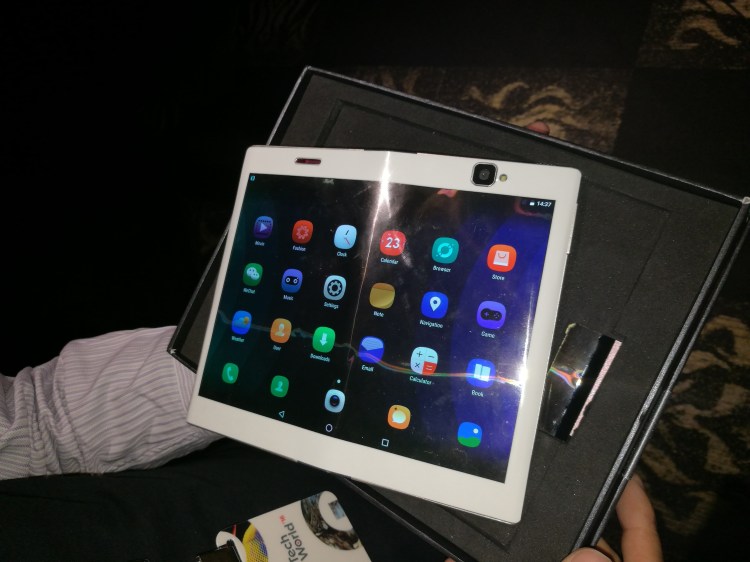Lenovo got lots of attention for finally launching augmented reality (AR) smartphones today at its Lenovo Tech World conference in San Francisco. But the most exciting thing didn’t make it onstage — it was only teased in a video that was recorded somewhere else. The video showed a person wrapping her phone around her wrist like a bracelet — and then folding a tablet in half. Audience members cheered and clapped.
After the keynote ended, a Lenovo employee named Yiqiang Yan was walking around with the devices in unmarked black cases. He was kind enough to show me the tablet, which is a newer prototype and likely cost upward of $1,000 to produce.
It’s very thin. But when you fold it in half, the thickness is more like what you would expect from a phone. And that’s good, because it’s about the length and width of a phone when you fold it in half, too.
And once you’ve folded the tablet in half, app icons migrate from the side that you’ve hidden onto the side facing you. It’s a fun animation. Features like a step counter, a weather widget, and music player pop up on the folded edge, not unlike the Samsung Galaxy Edge.
The device, under development for nearly a year, isn’t really optimized for specifications so much as it is for the novel display technology. So in this case, the prototype had 2GB of RAM and 16GB of flash storage, with one standard USB-C port, said Yan, director of Lenovo’s Research & Technology Device+ Lab in Beijing. And the placement of the camera and speaker is a bit odd — above the display the speaker is in the center of the left half, and the rear camera is at the center of the right half. It makes sense in phone mode, but not so much in tablet mode.
But there’s a bigger meaning here. Lenovo, which has made itself better known globally through acquisitions of mature technology like IBM’s laptop and server businesses and Motorola Mobility, is early in its implementation in flexible mobile displays as a result of first-party research. Samsung could unveil smartphones with bendable displays as early as early 2017, Bloomberg reported earlier this week.
Lenovo has shown something real to members of the public, while so far Samsung has not. But it might take three years before these types of Lenovo gadgets become available for the public to buy, Yan said.
VentureBeat's mission is to be a digital town square for technical decision-makers to gain knowledge about transformative enterprise technology and transact. Learn More






